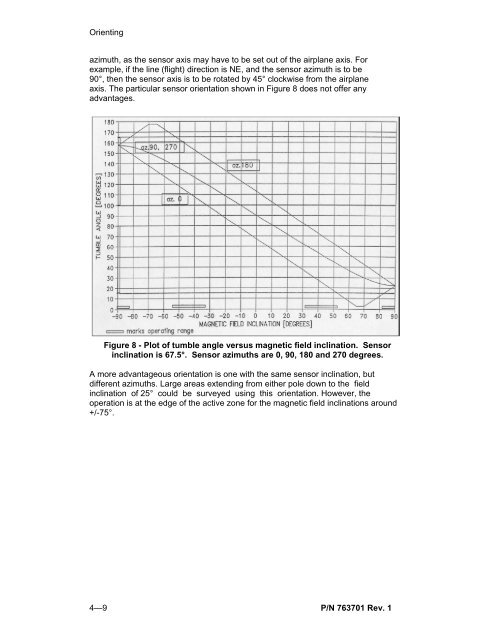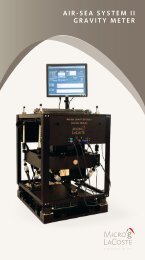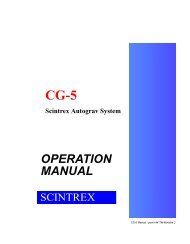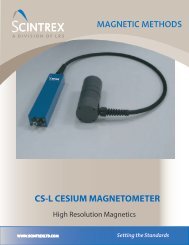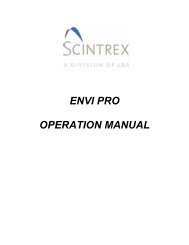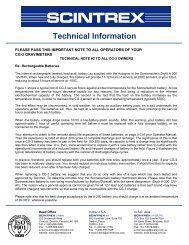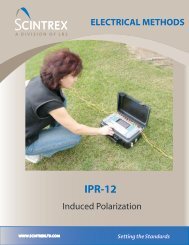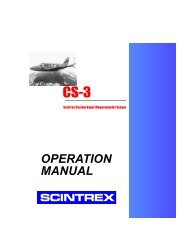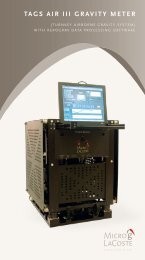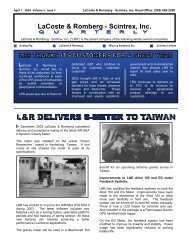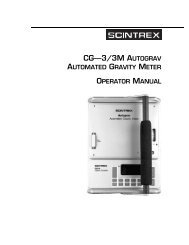CS-L Cesium Vapor Magnetometer Sensor OPERATION ... - Scintrex
CS-L Cesium Vapor Magnetometer Sensor OPERATION ... - Scintrex
CS-L Cesium Vapor Magnetometer Sensor OPERATION ... - Scintrex
You also want an ePaper? Increase the reach of your titles
YUMPU automatically turns print PDFs into web optimized ePapers that Google loves.
Orienting<br />
azimuth, as the sensor axis may have to be set out of the airplane axis. For<br />
example, if the line (flight) direction is NE, and the sensor azimuth is to be<br />
90°, then the sensor axis is to be rotated by 45° clockwise from the airplane<br />
axis. The particular sensor orientation shown in Figure 8 does not offer any<br />
advantages.<br />
4—9<br />
Figure 8 - Plot of tumble angle versus magnetic field inclination. <strong>Sensor</strong><br />
inclination is 67.5°. <strong>Sensor</strong> azimuths are 0, 90, 180 and 270 degrees.<br />
A more advantageous orientation is one with the same sensor inclination, but<br />
different azimuths. Large areas extending from either pole down to the field<br />
inclination of 25° could be surveyed using this orientation. However, the<br />
operation is at the edge of the active zone for the magnetic field inclinations around<br />
+/-75°.<br />
P/N 763701 Rev. 1


